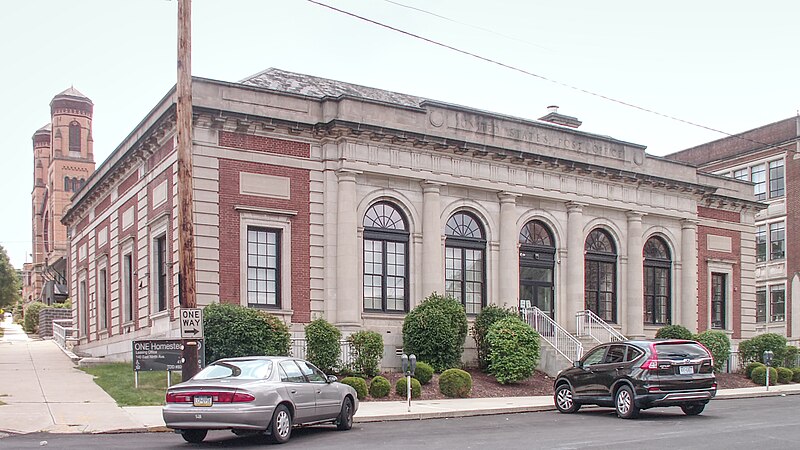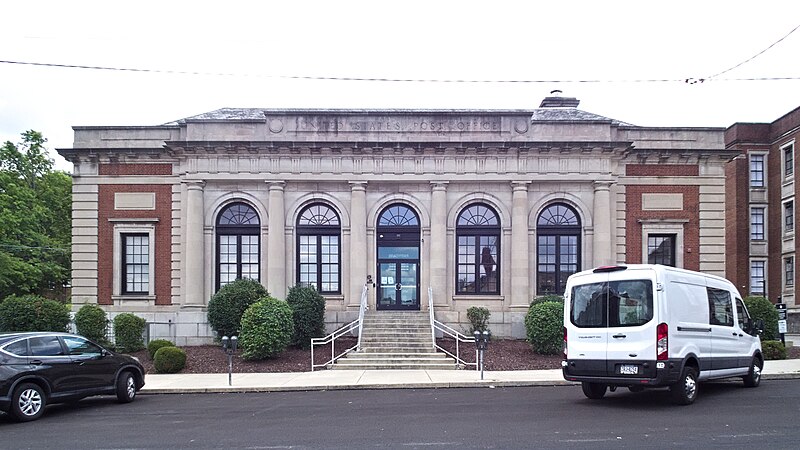
Ten years ago this building was abandoned, and the jungle was rapidly swallowing it (here’s a Street View image from Google Maps). Now it’s beautifully restored and in use.
Addendum: According to the Pittsburgh History and Landmarks Foundation, this post office was built in 1912, with James Knox Taylor listed as architect; but since he was Supervising Architect of the Department of the Treasury, we don’t know how much he had to do with the design. It is certainly true that the designs coming from his office had a certain similarity, implying that he was the dictator of taste if not the architect of the details.

Yesterday we visited McKeesport, a city that has suffered much and probably still has more to suffer. But when our frequent correspondent “von Hindenburg” bemoaned the tragedy of McKeesport, we promised to lift his spirits with some pictures from Homestead, another Mon Valley city (technically a borough) where the news is more cheerful. We’ll be seeing quite a few pictures from both places over the next few days or weeks, and the comparison is instructive.
Both cities lost their reason for being with the end of heavy industry. In McKeesport, the politicians who had presided over the city’s decline had only one strategy for revival: bring back heavy industry. It was never going to happen. In Homestead, politicians seem to have realized that, if the place had a future, it would be as a bedroom community and shopping area for metropolitan Pittsburgh. The gigantic Waterfront development that replaced the Homestead Works brought in money. Father Pitt criticized it for being isolated from the rest of Homestead, but the prosperity has seeped through anyway, and now the Eighth Avenue business district, once nearly deserted, is filling up with brewpubs and smoothie bars and axe-throwing emporia and other signs of prosperity.
Homestead is far from free of problems. But it is beginning to look like an attractive place to live again. McKeesport has what the real-estate agents call potential, but right now it’s definitely a fixer-upper.



